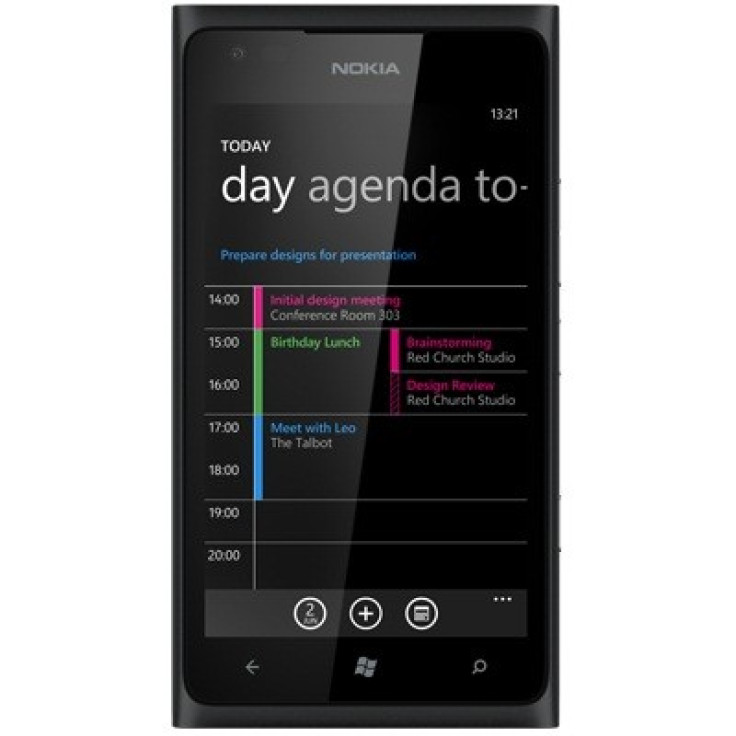HTC Evo 4G LTE vs Nokia Lumia 900: Android or Windows Smartphone?
Showdown of Android and Windows Smartphones

HTC has unveiled its Evo 4G LTE which features Beats audio software and offers a realistic sound experience. The feature-packed smartphone boasts of HD voice, Near Field Communication (NFC) and Google Wallet. It is the carrier's first smartphone to include LTE capability. The HD voice technology uses a new voice encoder and decoder in the Sprint network as well as in the handset along with the microphones to provide natural-sounding voices, according to Twice.
The Nokia Lumia 900 touts a fabulous ClearBlack touchscreen and with a one-piece polycarbonate body, the device provides better antenna performance as well as reception.
Check out how the smartphones stack up:
Display
The Evo 4G LTE touts a Super IPS LCD2 capacitive touchscreen with a resolution of 1280x720 pixels. The 4.7in screen includes HTC Sense UI as well as Corning Gorilla Glass which defends the screen from everyday wear and tear.
In comparison, the Lumia 900 comes with an AMOLED capacitive touch-screen with a resolution of 800x480 pixels at 217 pixels per inch (ppi). The screen is protected by Corning Gorilla Glass. The 4.3in screen incorporates Nokia ClearBlack display.
Processor
The Evo 4G LTE is powered by a 1.5GHz Krait dual-core processor. It comes with an Adreno 225 GPU which provides support to powerful graphics.
The Lumia 900 is powered by a 1.4 GHz Scorpion CPU Qualcomm APQ8055 Snapdragon chipset. It includes Adreno 205 GPU.
Camera
Both smartphones boast an eight megapixel rear-facing camera.
The Evo 4G LTE features auto-focus, LED flash, geo-tagging, face and smile detection and simultaneous HD video and image recording. It lets users record video of 1080p which enables stereo sound recording and video stabilisation. It includes a front-facing camera of 1.3 megapixels for video calling.
In contrast, the Lumia 900 features Carl Zeiss optics, auto-focus, dual LED flash and geo-tagging. It offers support to video recording of 720p with video stabilisation and one megapixel secondary VGA camera.
Operating System
The Evo 4G LTE runs on Google's latest Android 4.0 Ice Cream Sandwich which features improved text input, spell checking, easy multitasking, new lock screen actions and resizable widgets.
The Lumia 900 runs on the Microsoft Windows Phone 7.5 Mango operating system.
Storage
The Evo 4G LTE includes a 16GB of internal storage and 1GB RAM. It comprises a microSD card with an additional memory of 32GB.
The Lumia 900 has 16GB of internal storage and 512 MB RAM. The device lacks a microSD card slot.
Connectivity
The Evo 4G LTE features Wi-Fi 802.11 a/b/g/n with Wi-Fi Direct, DLNA and Wi-Fi hotspot. It supports Bluetooth 3.0 with A2DP technology.
Nokia's Lumia 900 features Wi-Fi 802.11 b/g/n and Bluetooth 2.1 with A2DP and EDR.
Battery
The Evo 4G LTE has Li-Ion 2000mAh standard battery which allows for stand-by time of up to 146 hours and talk time of up to five hours.
Lumia 900 has a Li-Ion 1830mAh standard battery which allows a standby time of up to 300 hours in 2G and 3G as well as talk-time of up to seven hours in 2G and 3G.
© Copyright IBTimes 2024. All rights reserved.





